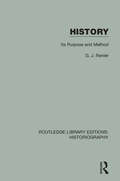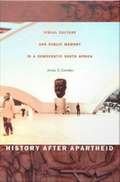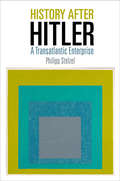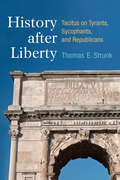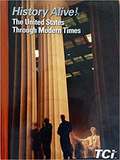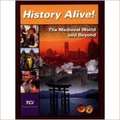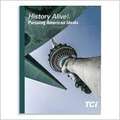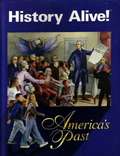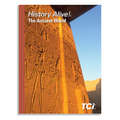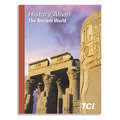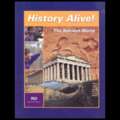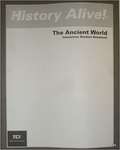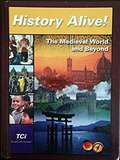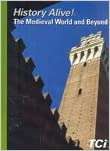- Table View
- List View
History: Its Purpose and Method (Routledge Library Editions: Historiography #34)
by G. J. RenierThis treatise of historical methodology, originally published in 1950 is based upon a liberal conception of history which excludes no narrator of past events from the ranks of historians. It defines history as the accurate story which preserves the memory of the past experiences of human societies. The functionof history determines its method and provides the answer to the question: how secure is our knowledge of the past? In the author’s view, history is empirical and its results are for ever provisional. The relative merits of dogmatism and scepticism are examined and several interpretations among English historians are scrutinized.
History: A Novel
by Lily Tuck Elsa Morante William WeaverHistory was written nearly thirty years after Elsa Morante and Alberto Moravia spent a year in hiding among remote farming villages in the mountains south of Rome. There she witnessed the full impact of the war and first formed the ambition to write an account of what history - the great political events driven by men of power, wealth, and ambition - does when it reaches the realm of ordinary people struggling for life and bread. The central character in this powerful and unforgiving novel is Ida Mancuso, a schoolteacher whose husband has died and whose feckless teenage son treats the war as his playground. A German soldier on his way to North Africa rapes her, falls in love with her, and leaves her pregnant with a boy whose survival becomes Ida's passion. Around these two other characters come and go, each caught up by the war which is like a river in flood. We catch glimpses of bombing raids, street crimes, a cattle car from which human cries emerge, an Italian soldier succumbing to frostbite on the Russian front, the dumb endurance of peasants who have lived their whole lives with nothing and now must get by with less than nothing.
History: வரலாறு: தமிழ் போட்டித் தேர்வுக்கான 1000 கேள்வி பதில்
by Tamil Competitive Examஇதில் தமிழ் போட்டித் தேர்வில் வரலாறு பாடத்தில் கேட்கப்பட்ட 1000 கேள்வி மற்றும் பதில்கள் கொடுக்கப்பட்டுள்ளன.
History 11th Standard - Tamilnadu Board
by State Council of Educational Research TrainingHistory Textbook for the 11th Standard Students, preparing for Tamil Nadu State Board Exam.
History 12th Standard - Tamilnadu Board
by State Council of Educational Research TrainingHistory Textbook for the 12th Standard Students, preparing for Tamil Nadu State Board Exam.
History 3 Student Guide Part 1
by K12 Inc.This 3rd Grade History course traverses history from the Stone Age to the Space Age. Throughout this course, third grade students will explore the Renaissance, journey through the Age of Exploration, get to know the Maya, Aztecs, and Incas, visit civilizations in India, Africa, China, and Japan, and learn about the American Revolution and Colonial America.
History 3 Student Guide Part 2
by K12 StaffThe unit titles are: Looking East: Ottomans and Mughals; Africa, China, and Japan; England's Golden Age and Beyond; The America They Found and Founded; Graphs, Timelines, and Geography Review; The American Revolution
History 4: Student Guide, Part 2
by K12"Every so often, human history seems to take a great leap forward. Suddenly people are able to do things they have never done before. They see their world in a whole new light. The late nineteenth and early twentieth centuries were such a time. In Europe and in the United States, people had invention fever. They sped up communication and transportation. They figured out new ways to cure diseases and to link the seas. It was an age of confidence. ""Can do!"" was the attitude. ""We can figure it out. We can make it happen."" Great optimism marked the age, and people went further than ever before. Let's remember some of their achievements. Every so often, human history seems to take a great leap forward. Suddenly people are able to do things they have never done before. They see their world in a whole new light. The late nineteenth and early twentieth centuries were such a time. In Europe and in the United States, people had invention fever. They sped up communication and transportation. They figured out new ways to cure diseases and to link the seas. It was an age of confidence. ""Can do!"" was the attitude. ""We can figure it out. We can make it happen."" Great optimism marked the age, and people went further than ever before. Let's remember some of their achievements. Every so often, human history seems to take a great leap forward. Suddenly people are able to do things they have never done before. They see their world in a whole new light. The late nineteenth and early twentieth centuries were such a time. In Europe and in the United States, people had invention fever. They sped up communication and transportation. They figured out new ways to cure diseases and to link the seas. It was an age of confidence. ""Can do!"" was the attitude. ""We can figure it out. We can make it happen."" Great optimism marked the age, and people went further than ever before. Let's remember some of their achievements. Every so often, human history seems to take a great leap forward. Suddenly people are able to do things they have never done before. They see their world in a whole new light. The late nineteenth and early twentieth centuries were such a time. In Europe and in the United States, people had invention fever. They sped up communication and transportation. They figured out new ways to cure diseases and to link the seas. It was an age of confidence. ""Can do!"" was the attitude. ""We can figure it out. We can make it happen."" Great optimism marked the age, and people went further than ever before. Let's remember some of their achievements. "
History After Apartheid: Visual Culture and Public Memory in a Democratic South Africa
by Annie E. CoombesThe democratic election of Nelson Mandela as president of South Africa in 1994 marked the demise of apartheid and the beginning of a new struggle to define the nation's past. History after Apartheid analyzes how, in the midst of the momentous shift to an inclusive democracy, South Africa's visual and material culture represented the past while at the same time contributing to the process of social transformation. Considering attempts to invent and recover historical icons and narratives, art historian Annie E. Coombes examines how strategies for embodying different models of historical knowledge and experience are negotiated in public culture--in monuments, museums, and contemporary fine art. History after Apartheid explores the dilemmas posed by a wide range of visual and material culture including key South African heritage sites. How prominent should Nelson Mandela and the African National Congress be in the museum at the infamous political prison on Robben Island? How should the postapartheid government deal with the Voortrekker Monument mythologizing the Boer Trek of 1838? Coombes highlights the contradictory investment in these sites among competing constituencies and the tensions involved in the rush to produce new histories for the "new" South Africa. She reveals how artists and museum officials struggled to adequately represent painful and difficult histories ignored or disavowed under apartheid, including slavery, homelessness, and the attempted destruction of KhoiSan hunter-gatherers. Describing how contemporary South African artists address historical memory and the ambiguities uncovered by the Truth and Reconciliation Commission, Coombes illuminates a body of work dedicated to the struggle to simultaneously remember the past and move forward into the future.
History After Hitler: A Transatlantic Enterprise (Intellectual History of the Modern Age)
by Philipp StelzelThe decades following the end of World War II witnessed the establishment of a large and diverse German-American scholarly community studying modern German history. As West Germany's formerly deeply nationalist academic establishment began to reconcile itself with postwar liberalism, American historians played a crucial role, both assisting and learning from their German counterparts' efforts to make sense of the Nazi past—and to reconstruct how German society viewed it.In History After Hitler, Philipp Stelzel puts this story center stage for the first time, positioning the dialogue between German and American historians as a key part of the intellectual history of the Federal Republic and of Cold War transatlantic relations. Making extensive use of previously inaccessible or unexplored personal papers and institutional files in German and American archives, Stelzel demonstrates that several factors fostered the growth of this transatlantic scholarly community. As a result of both National Socialism and the Cold War, American interest in Germany grew remarkably. In addition, a small but increasingly influential cohort of German émigré historians working in the United States served as transatlantic intermediaries. Finally, the strong appeal of American academia to West German historians of different generations led many of them to form and maintain close ties with their American colleagues.History After Hitler explores how these historians participated as public intellectuals in debates about how to cope with the Nazi past, believing that the historical awareness of West German citizens would bolster the Federal Republic's democratization. Stelzel also corrects simplistic arguments regarding the supposed "Westernization" of the Federal Republic, emphasizing that American scholars, too, benefited from the transatlantic conversation. History After Hitler makes the case that, together, German and American historians contributed to the development of postwar German culture, intellectual life, and national self-understanding.
History after Liberty: Tacitus on Tyrants, Sycophants, and Republicans
by Thomas StrunkRoman historian Tacitus wrote a damning critique of the first century CE Roman empire. The emperors in Tacitus' works are almost universally tyrants surrounded by flatterers and informants, and the image Tacitus creates is of a society that has lost the liberty enjoyed under the Roman Republic. Yet Tacitus also poignantly depicts those who resist this tyranny and seek to restore a sense of liberty to Rome. In his portrayal of autocrats, sycophants, and republicans Tacitus provides an enduring testament to the value of liberty and the evils of despotism. History after Liberty explores Tacitus' political thought through his understanding of liberty. Influenced by modern republican writers such as Quentin Skinner and Philip Pettit, this study defines Tacitean libertas as the freedom from the rule of a dominus and as freedom to participate in the traditional politics of Rome through military service, public service in the senate and magistracies, and public speech. All of these elements are balanced in Tacitus' writings with examples of those resisting the corruption of politics in an effort to restore a sense of free civic engagement. The work concludes with an exploration of Tacitus' own writings as an act of restoring liberty. In contrast to most studies on Tacitus, History after Liberty argues that Tacitus is a republican who writes both to demonstrate that Rome had become a tyranny and to show a way out of that tyranny. History after Liberty addresses the political thought of Tacitus' writings. As such it will be of most interest to those who study the history and historiography of the early Roman empire, namely classicists and ancient historians. The work will also be of use to those interested in the antecedents to modern political thought, particularly the history of republicanism and freedom; readers from this category will include political scientists, philosophers, and modern historians.
History Alive!: The United States Through Modern Times
by Bert Bower Diane Hart Teachers' Curriculum Institute StaffA valuable resource full of imaginative, ready-to-use ideas for social studies teachers who want to involve students of all ability levels in the learning process. History is presented from a multicultural perspective to maximize student awareness.
History Alive!: The Medieval World and Beyond
by Teachers' Curriculum InstituteNIMAC-sourced textbook
History Alive! The Ancient World
by Teachers' Curriculum InstituteHistory book that covers the following units in regards to the ancient world; Early Humans and the Rise of Civilization, Ancient Egypt and the Middle East, Ancient India, Ancient Greece, Ancient Rome.
History Alive! The Ancient World
by Teachers Curriculum Institute"This program comprises six units with text on Early Humans and the Rise of Civilization, Ancient Egypt and the Middle East, Ancient India, Ancient China, Ancient Greece, and Ancient Rome. Maps, Timeline, Resources, Diagrams and Tables are additional features. "
History Alive! The Ancient World
by Teachers' Curriculum InstituteHistory Alive! The Ancient World was developed by middle school teachers at Teachers' Curriculum Institute (TCI). We, Bert Bower and Jim Lobdell, are two former high school teachers who started TCI. Our goal is to help students like you succeed in learning about history in a way that is fun and exciting. With the help of teachers from around the nation, we've created the TCI Approach to learning. This chapter explains how the TCI Approach will make ancient world history come alive for you.
History Alive! The Ancient World: Interactive Student Notebook
by Teachers' Curriculum InstituteInteractive student notebook - companion to History Alive! The Ancient World. <P><P>History Alive! The Ancient World introduces students to the beginnings of the human story. As they explore the great early civilizations of Egypt and the Near East, India, China, Greece, and Rome, students discover the secrets of these ancient cultures that continue to influence the modern world.
History Alive! The Ancient World, Lesson Masters
by Teachers' Curriculum InstituteNIMAC-sourced textbook
History Alive! The Medieval World and Beyond
by Bert Bower Jim LobdellHistory Alive! The Medieval World and Beyond is probably unlike any other history program you have ever encountered. Perhaps you have been in history classes where you listen to the teacher and then read a textbook and answer chapter questions. Does this approach make you excited about learning history? Most students would say no, and educational researchers would tend to agree. Researchers have discovered new ways of reaching all students in the diverse classroom. This program relies on three of their theories: 1) Students learn best through multiple intelligences; 2) Cooperative interaction increases learning gains; and, 3) All students can learn via the spiral curriculum.
History Alive! The Medieval World and Beyond
by Sally Isaacs Lauren Kent Beth LasserNIMAC-sourced textbook
History Alive! The Medieval World and Beyond
by Teachers' Curriculum InstituteHistory Alive The Medieval World and Beyond , students edition introducing and expounding Europe During Medieval Times, Islam in Medieval Times, The Culture and Kingdoms of West Africa, Imperial China, Japan During Medieval Times, Civilizations of the Americas, Europe's Renaissance and Reformation, and Europe Enters the Modern Age
